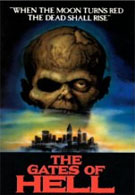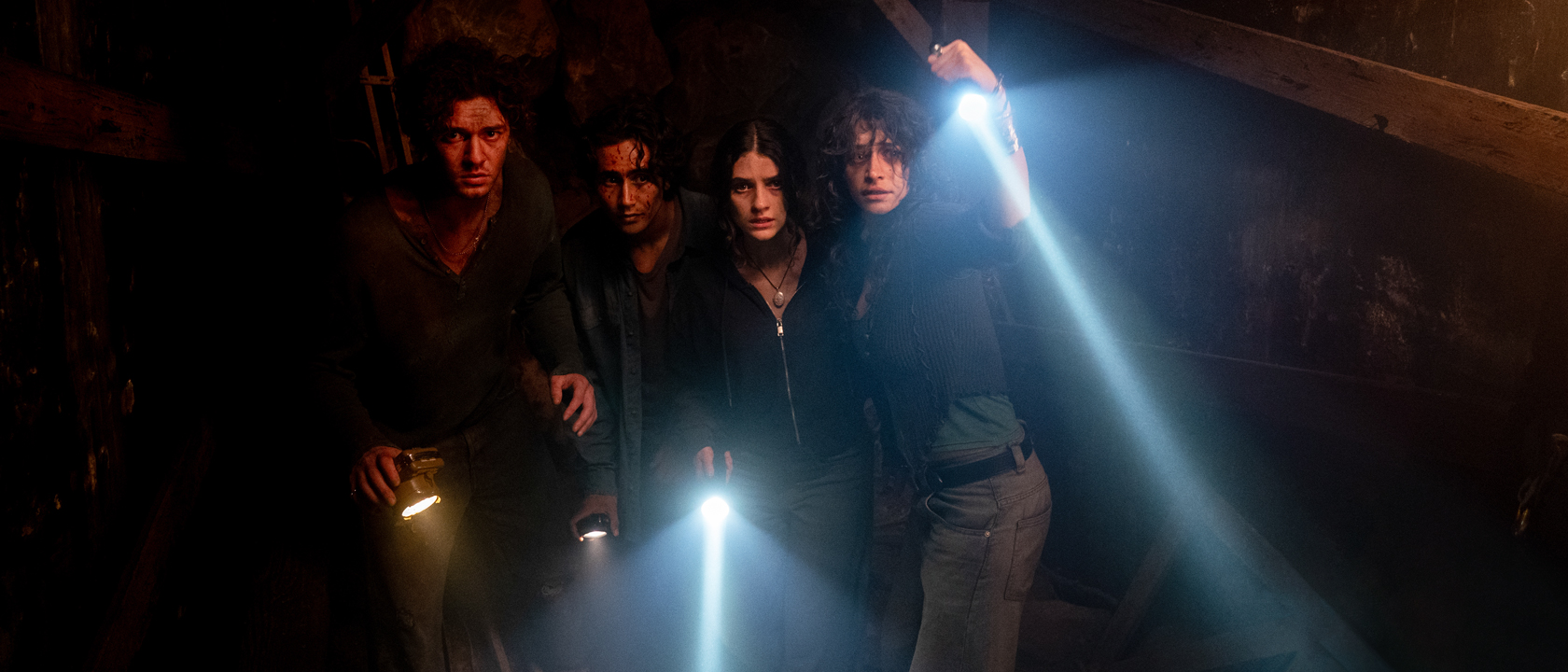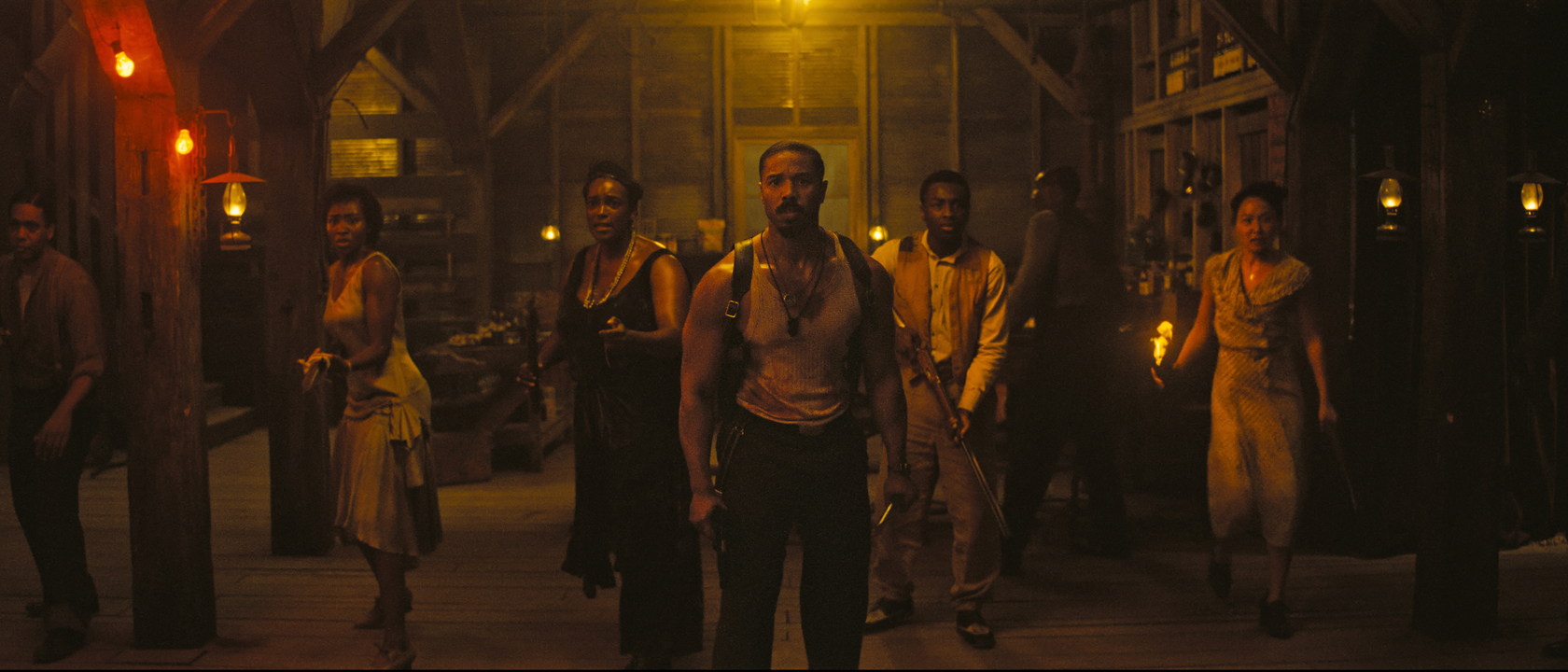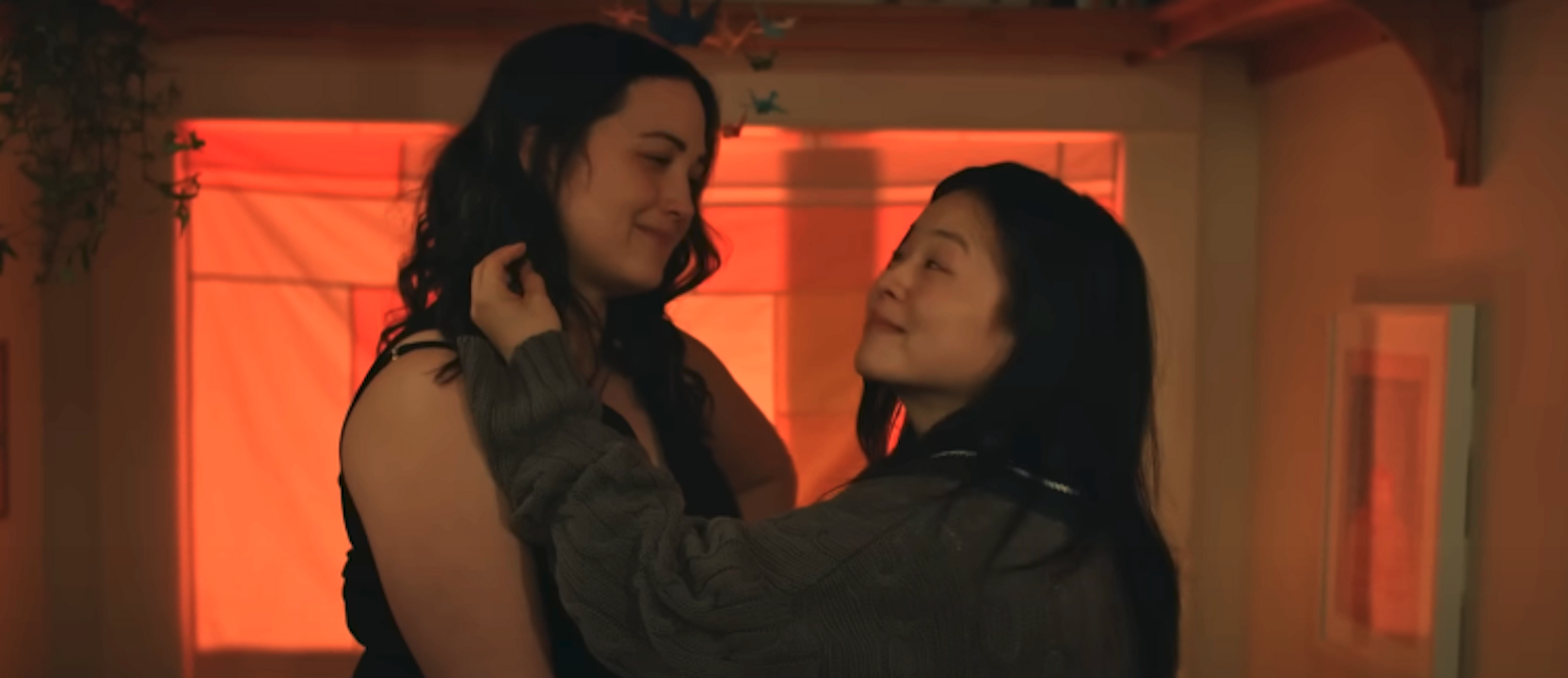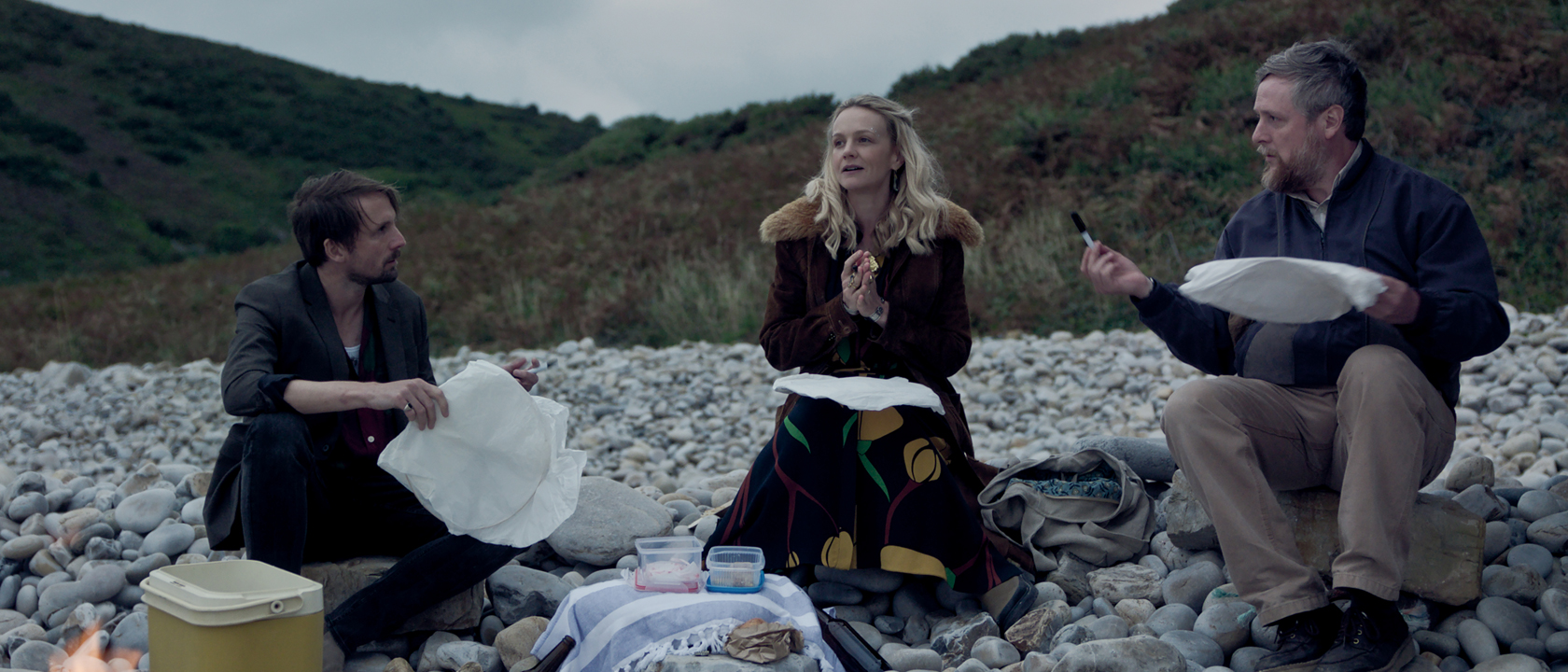Teleporting Zombies! Hanging priests! Bleeding eyes! Organ regurgitation! Tarzan jungle sound effects! Carlo de Mejo with a beard “Just for Men“! John Morghen and his blow up doll! Also well known as City of the Living Dead, this is one crazy movie. In the hands of the late “Godfather of Gore”, Lucio Fulci, The Gates Of Hell has a near plotless logic all it’s own as well as characters and subplots that seem imported from several different films. I first saw this on VHS in the early ‘80s when Fulci films stalked the video shelves in those “Scary” super sized boxes from companies like Paragon. These were often emblazoned with quotes like “Banned in 67 countries!” and tried to give Fangoria nuts the impression they were dealing with some serious splatter material that might just be snuff. Warnings and danger labels were all over the thing promising great psychological damage to anyone who dared to rent it. This was, of course, the video store version of the Grindhouse hard-sell. It, of course, worked like a charm.
Fulci’s previous film was Zombie, which in Italy was known as Zombi 2. It was actually sold as a sequel to George Romero’s Dawn of the Dead which was an Italian co-production with Dario Argento known there as Zombi. In the US, however, Zombie was just sold as a new living dead pic, with one of the best ads ever: an eyeless, maggot infested zombie staring out in stark black and white with the words, “We are Going to Eat You” in bold print. I actually thought that was the title of the movie when I first saw the posters in NYC.
Zombie is an amazing, crazy movie, too, with an incredible, near genius scene in which a topless girl is scuba diving off an unknown Caribbean island called Matool, when she is suddenly attacked by an underwater zombie. Really. After a struggle she’s able to make it safety when a shark suddenly shows up (!) and distracts the zombie who begins to wrestle with it. I’ve always assumed that Fulci or his writers saw Jaws one night and thought, you know, that they just had to get a shark in there somewhere, at least for the trailers. Roger Corman was a master at this, making his trailer editors cut in the same stock shot of an exploding helicopter into small character dramas like Monte Hellman’s Cockfighter. Never mind the fact that the movie itself did not feature any helicopters and certainly none of the exploding variety. All was well as long as the picture made money.
Well, Zombie made some real money and Italian producers are well known for their “Filone” system of motion picture production. “Filone” is the Italian word for “river” and refers to the fact that local producers would exploit a successful film by flooding the market with sequels and knock-offs until the river was dry. They would then look for the next big thing. It’s often mistakenly used synonymously with the word “genre” but “filone” refers more specifically to cycles or trends in a particular genre or mix of genres that are exploited for a period of time. Since Fulci was onto a new “filone“, it was clear that a follow up would be needed. This time, the familiar gore set pieces would be mashed up with a plot that borrowed from the rich literary tradition of H.P. Lovecraft. Fulci notes the plot onscreen through massive chunks of verbal exposition and then slides around it.
Here’s the result: In the town of Dunwich, Massachusetts, Father Thomas hangs himself in the local cemetery and thus opens the Gates of Hell. Meanwhile, during a séance in New York, Mary Woodhouse (Catriona MacColl) has a vision of the priest hanging himself and along with cigar chomping reporter Peter Bell (Christopher George) decides to head for Dunwich to close the gates before All Saints Day, following which the dead shall inherit the earth. Along the way, we learn that Dunwich is built upon the remains of Salem, Massachusetts even though I am pretty sure that Salem still exists and also that the city of New York doesn’t seem to embalm their dead.
The script is exactly the kind of midnight snack concoction that Fulci would come up with when working with co-writer Dardano Sachetti. It was clearly written around the various set pieces and incorporates the story structure used by John Carpenter and Debra Hill for The Fog in which competing storylines eventually meet at a converging point. The plot is meaningless and the characters senseless. But these are pluses for films in this cycle. The violence, on the other hand, is very logical and played out in full clinical detail.
These films have much in common with old fashioned Broadway musicals as well as hard core porn. As in musicals and porno, you get the barest bones of a story that acts as a jumping off point for the real show, either singing and dancing or sexual intercourse. Here, it’s the full Grand Guignol of splatter special effects. What separates Fulci from his more blunt colleagues is that he also pays a good deal of attention to the creation of a truly sick, spooky atmosphere as well. This attention to atmospheric detail is one of the keys to the specific flavor of horror that Lucio Fulci had trademarked. Fulci has this mad style that seems to be half planned, half improvised to save his ass on the day of shooting. Some scenes and shots look absolutely amateur and barely covered while others are rich in complex set ups and camera movement. The camera zooms in to something weird in the background, pans around it, zooms back and over to something else which it zooms into again. All in one take and lighting set up, it takes the practicalities of low budget shooting and renders them within a particularly weird shooting style that makes his weird films even weirder. The effect is akin to a drugged up viewer looking around a scene at will for something to grab his attention, usually a rotting corpse in a dark corner.
Competing for attention themselves, the cast is full of genre favorites like Christopher George, Catriona MacColl, John Morghen (aka Giovanni Lombardo Radice) and Carlo de Mejo as Gerry, the local psychiatrist. (I don’t know about your small town, but my town doesn’t have a local psychiatrist. We do, however, have a doctor who sleeps with his patients and so in that sense, we have something in common with Dunwich, Massachusetts.)
John Morghen appears as a really off the wall character. He plays Bob, a guy who lives in a shack with a blow up sex doll and has visions of a rotting, maggot infested baby from time to time. He’s always getting into trouble in town and seems to be a kind of ladies’ man as well, getting into the pants of some of the local virgins. Morghen is great in the role, quite different from his performance as Mike Logan the sadistic coke addict in Make Them Die Slowly(aka Cannibal Ferox). He’s also killed in one of Fulci’s most famous scenes: the drill bit through the head murder. Seems that the father of one of the girls Morghen was shacking up with has chased him down and intends on his own kind of screwing.
This subplot is really at the core of what makes Fulci films exciting. It has no right to be in this movie at all and yet the movie derives much of it’s power from it’s inclusion. It’s insane to put this story in the film and this leads us to feel that we are watching something that won’t cater to standard niceties like screenplay structure or genre convention. Fulci’s great flaw, however, was in his inability to make good on this suggestion. In the end, his films often return to more familiar ground instead of dancing way out there in no man’s land. When he trusted his instincts like he did with The Beyond he achieved the sublime. It seems as though Gates was a transition film for him, as it kept one foot in the world of personal nightmare with the other firmly planted in an ordinary good vs. evil scenario.
Still, there is a lot of strangeness in the film, details which seem almost inexplicable. For example, it seems that, at least in Italy, zombies can teleport around at will, popping up here, zipping off to there. Makes it kind of hard to blow their brains out. Not that this kills an Italian zombie. The main zombie priest is only stopped when he has a dagger shoved deep into his Holy Crotch. Perhaps a sign of Fulci’s famed anti-catholic sentiments or perhaps it was just a really cool way to kill a priest. Mary Woodhouse is pronounced dead at the beginning of the movie and then buried. Peter Bell visits her grave and luckily hears her screaming for help from under the ground. He rather absurdly uses a pickax to free her, almost killing her in the process. Since she survives this premature burial, I have to assume that New York City didn’t learn to embalm people in the early ‘80s.
Fulci always has fantastic noisy soundtracks which add much to the atmosphere. The “Halloween Scary Sound Effects CD Vol. 1” really gets a workout here, creating the sound of intense winds, and even creating sounds for soundless creatures like worms and maggots the way the spiders in The Beyond whispered to each other. The best sound effect, however, is the screeching monkeys we hear at night on the streets of New England. Maybe these are zombie monkeys who escaped the local zoo. Maybe Fulci was sniffing some glue.
Fabio Frizzi’s score is an incredible synth horror special that has the familiar “Zombie Disco Theme” he reused in several Fulci films (once you‘ve heard it, you‘ll never get it out of your head. It‘s like a Donna Summer ballad on Quaaludes) . It also has the trademark Fulci technique of “needle dropping.” That is, Fulci has a scene where something is about to happen and it sounds like he drops the needle on some scary music that is already in progress and at some point, merely lifts the needle. His music editing has no reason. Music starts and then is immediately cut off at any random place in the track and without any finesse like a slow fade. Quentin Tarantino actually demonstrates this effect in Kill Bill Vol. 1 when he has the Bride roll into the parking garage in her wheelchair to a cool 70s theme until she finds and unlocks the “Pussy Wagon” whereby the score is abruptly shut off.
Fulci spent his career playing second banana to the more refined and stylized work of Dario Argento. Certainly Fulci was not the innovator that Argento was or in any way as self conscious an artist. A film like Argento’s Suspiria is simply a much more accomplished work than even The Beyond a film many consider to be Fulci’s masterpiece. But Fulci’s films are fascinating in their contradictions, both well conceived and thrown together at the same time. Certainly, Argento never achieved the simple feel of a horror nightmare in the effortless way that Fulci could. The two filmmakers mined very similar territory in the early ‘80s, trying to free the horror genre from the restrictions of narrative and to create something closer to a “horror concept film”, where the theme was simply about fear and death. The film would present episodes that would envelope the viewer in it’s atmosphere, regardless of story. Argento designed greater and greater visual set pieces to achieve this, employing the most current technology in camera cranes and lighting to dazzle the viewer. Fulci, on the other hand, focused on almost clinical examinations of death and decomposition on screen aided by the fine special makeup effects of Gino De Rossi. It was less flashy perhaps but no less disturbing.
With people attacked by swarms of maggots, their brains pulled out by powerful zombie hands, and their eyes weeping blood, The Gates of Hell is exactly what makes for a great exploitation flick. It goes right for the jugular and presents scenes which are almost taboo. The audience is encouraged to talk loudly to the screen and express their shock, awe and terror at what unfolds. This is a cinema that demands audience participation.
The ending of this movie is always talked about and has to be seen to be believed. Supposedly, Fulci either ran out of time, money or lost some footage in the lab and had to get creative. It certainly isn’t possible to describe in a review unless I did something like thi---
“OHMYGOD!!!!NOOOOOOOOOOO!!!!!!” The Gates of Hell is available on DVD through Blue Underground as City of the Living Dead.
I Talked To The Wedding Banquet Director About My Favorite Scene, And Turns Out Youn Yuh-Jung Actually Had A Key Note That Made It Better
Georgie & Mandy's First Marriage Just Revealed A Messy Twist In Connor's Relationship, And I Can See This Getting Complicated
Someone Asked Dave Filoni About An Idea For A Mandalorian And Grogu Popcorn Bucket, And Please Take My Money
